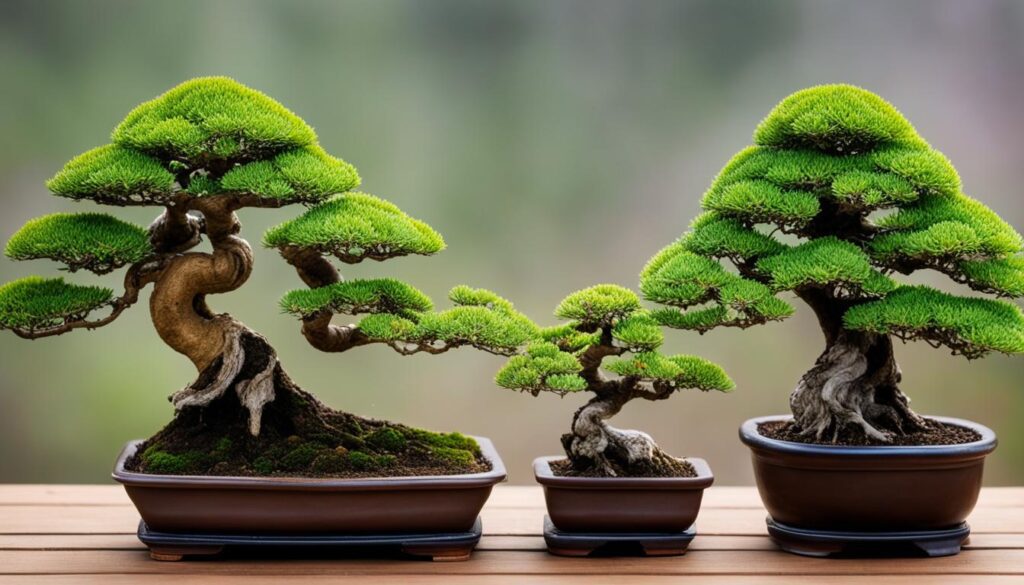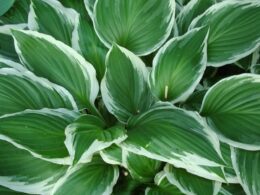Are you an aspiring bonsai enthusiast curious about the size potential of bonsai trees? Well, you’ve come to the right place! Bonsai trees are not a specific species, but rather a unique style of cultivating and styling trees to create miniature versions that mimic the appearance of full-sized trees. But just how big can a bonsai tree actually get?
If left unpruned and provided with adequate light, space, and nutrients, a bonsai tree can grow just as big as other trees of its species. However, the art of bonsai involves keeping the trees small by regularly pruning the leaves, branches, and roots. This careful pruning and maintenance not only shapes the tree but also influences its size.
So, what factors actually influence the growth and size of bonsai trees? Various elements come into play: the type of species, pruning techniques, root pruning, light exposure, available space, and the nutrients provided through proper fertilization. Each of these factors plays a significant role in determining the size and growth rate of a bonsai tree.
Whether you’re interested in large bonsai trees that require several people to move or small miniature bonsai that fit in the palm of your hand, the choice is yours! Let’s explore the different size classifications of bonsai trees in the next section.
Different Sizes of Bonsai Trees
Bonsai trees come in different sizes, providing a diverse range of options for bonsai enthusiasts. Each size has its own classification, allowing you to choose the perfect bonsai tree based on your preferences and available space.
The largest bonsai tree size, known as the Imperial bonsai, can reach an impressive height of 60-80 inches and requires eight people to move. Other large bonsai sizes include the Hachi-uye (six-handed bonsai, 40-60 inches) and Dai or Omono (four-handed bonsai, 30-48 inches).
For those who prefer medium-size bonsai trees, options include the Chiu or Chumono or Ōgata (two-handed bonsai, 16-36 inches) and the Katade-mochi or Chuhin (one-handed bonsai, 10-18 inches).
The smallest bonsai trees fall into the miniature bonsai category, which includes the Kumono or Kifu (one-handed bonsai, 6-10 inches), Shohin or Chohin (one-handed bonsai, 5-8 inches), Mame (fits in the palm of your hand, 2-6 inches), Shito (fingertip size, 2-4 inches), and Keshitsubo (tiny trees, poppy seed size, 1-3 inches).
This classification of bonsai tree sizes allows you to select the perfect bonsai to suit your taste and the available space in your home or garden.
Factors Affecting the Size of Bonsai Trees
The size of a bonsai tree is primarily influenced by the care and maintenance provided by its owner. Regular pruning of the branches and leaves helps control the size and shape of the tree. Root pruning is also essential to restrict the growth of the roots and promote more compact growth.
Adequate access to light is crucial for the growth and health of indoor bonsai trees. These trees should be placed in a location that receives direct sunlight for a significant portion of the day. Outdoor bonsai trees, on the other hand, depend on the specific species and their light requirements.
Providing sufficient space for the bonsai tree to grow is important to prevent it from becoming root-bound and to allow for healthy root development. The container or pot in which the bonsai is planted should be appropriately sized to accommodate the growth of the tree.
The nutrients provided through proper fertilization and the type of bonsai soil used also play a vital role in the size and growth rate of the tree. Bonsai trees require a well-balanced fertilizer to ensure they receive the necessary nutrients for healthy growth.
With good care and the right conditions, a bonsai tree can experience multiple rounds of new growth each year, contributing to its overall size and appearance.
Conclusion
When it comes to bonsai trees, proper care is key to achieving your desired size and shape. While bonsai trees have the potential to grow as large as their full-sized counterparts, the art of bonsai lies in keeping them small through regular pruning of branches, leaves, and roots. By maintaining a balance between growth and control, you can create stunning miniature trees that bring beauty and serenity to your home or garden.
The size classifications of bonsai trees offer a range of options to suit your preferences and available space. From large bonsai that require a group of people to move to miniature bonsai that can fit in the palm of your hand, there is a size for every aspiring bonsai enthusiast. Whether you choose to nurture a majestic Imperial bonsai or a delicate Mame tree, the process of caring for them remains the same.
Pruning plays a crucial role in maintaining the size and shape of bonsai trees. By selectively removing branches and leaves, you can guide the growth of the tree while preserving its natural beauty. Root pruning is equally important as it helps keep the tree compact and prevents it from becoming root-bound. Providing optimal conditions, such as access to light, sufficient space, and proper nutrients, further promotes healthy growth.
By understanding and implementing proper bonsai tree care techniques, you have the power to shape and nurture these living artworks. Whether you are a seasoned bonsai enthusiast or a beginner, the journey of bonsai tree care is one of patience, dedication, and beauty. So roll up your sleeves, grab your pruning shears, and embark on the rewarding journey of bonsai tree care and cultivation.
Can Bonsai Trees Be Grown from Wheat?
Bonsai trees cannot be grown from wheat. Bonsai trees are typically cultivated from woody plants, not cereal crops like wheat. The wheat growing process explained involves planting seeds, ensuring proper sunlight and watering, and patiently waiting for the wheat to mature for harvest.









